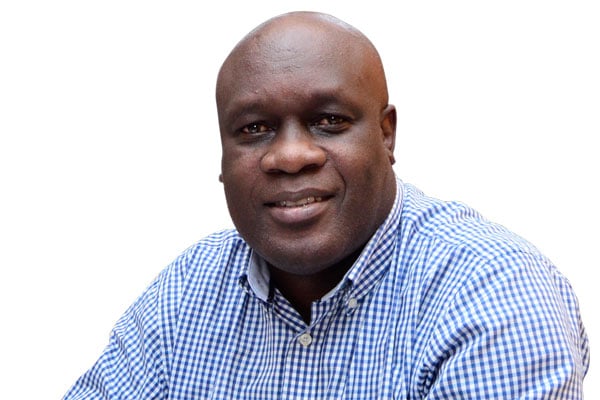If picture is worth a thousand words, which one should it be?

Author: Odoobo C. Bichachi is the Nation Media Group (NMG)-Uganda public editor. PHOTO/FILE.
What you need to know:
The general guidelines in handling such scenarios is to exercise empathy, rationale, and taste
In the last fortnight, I received complaints relating to the use of photographs and a headline in the Daily Monitor.
First, it was the Ministry of Health that protested the publication of photos, names, parents, villages, etc of persons suspected to (or died) of Ebola in Mubende District (see Daily Monitor, September 21). Many of them were children.
The ministry argued that publishing full details of the victims was causing stigma to the affected families and undermining their efforts to trace contacts as many hide to avoid being stigmatised.
Second was a lady doctor (name withheld) who protested the publication of a graphic of a used women’s sanitary pad to illustrate a question-and-answer health column in which a reader had sought counsel on why days of her periods had reduced. The complainant said the use of this image was inappropriate and unnecessary (see Daily Monitor, September 26).
Earlier, on the day Queen Elizabeth of Britain was buried, I was called about a headline in the op-ed section, “Queen Elizabeth is dead, good riddance” (Daily Monitor, September 19). The reader thought the headline was insensitive and premised on the queen’s personal participation in colonialism yet Britain’s imperialism pre-dated her.
I had a lengthy discussion with the reader. Could the headline have been different? Should the opinion article have been published in its entirety – and on the “big day”? Or could it have been reduced to a letter to blunt the rather personal attack on the Queen for the sins of colonialism (and there are many)?
As to the images, it is worth noting that photographs are a very important element of newspapers primarily for three reasons: One, to brighten the page and break the grey monotony of text which is boring to the eye and could put off readers. Two, to tell the news because as the old adage goes, a picture is worth a thousand words. Three, to show what the news – event, persons, etc – looks like given that many times no amount of description in text can convey in the minds of the reader what the situation or persons look like.
The above elements were definitely at the back of the editors’ minds when they decided to publish the images complained about, as with the many other images that no one complained about, or that excited many readers.
The two complaints touched on ethical issues and I shared them with the editors. In the first case, the editors explained that their decision to publish photos of the deceased Ebola victims (including minors that are ordinarily protected) was based on the need to alert those that may have attended the funeral or been in contact with those that did, to alive to the possibility of having picked infection considering that Ebola is a highly infectious and potentially fatal disease.
The public interest, in the editors’ minds, therefore overrode considerations of privacy of victims and empathy for the bereaved.
In the case of the second complaint, there was unanimity that the image was indeed unnecessary, inappropriate, and in bad taste.
Editors grapple with decisions every day, whether it is the headline, quote in the story, angle of the story, etc. The decisions are mostly guided by the law (what is legal and what is not), and by the journalist code of ethics (what is proper, acceptable, or justifiable and what is not).
However, sometimes emotions come in the way and blur the decision making. Sometimes the scenarios are in black and white while sometimes they are in the grey zone whereby one must be extremely judicious in deciding what photos to publish or not.
The general guidelines in handling such scenarios is to exercise empathy, rationale, and taste. The US National Press Photographers Association Code of Ethics gives a good place to stand when it says thus: “Treat all subjects with respect and dignity. Give special consideration to vulnerable subjects and compassion to victims of crime or tragedy. Intrude on private moments of grief only when the public has an overriding and justifiable need to see.”
Perhaps Bernard Gabony, a multimedia trainer at BBC News, put it best when he said, “If a picture is worth a thousand words, make sure you choose the right one!”
Send your feedback/complaints to [email protected] or call/text on +256 776 500725.




